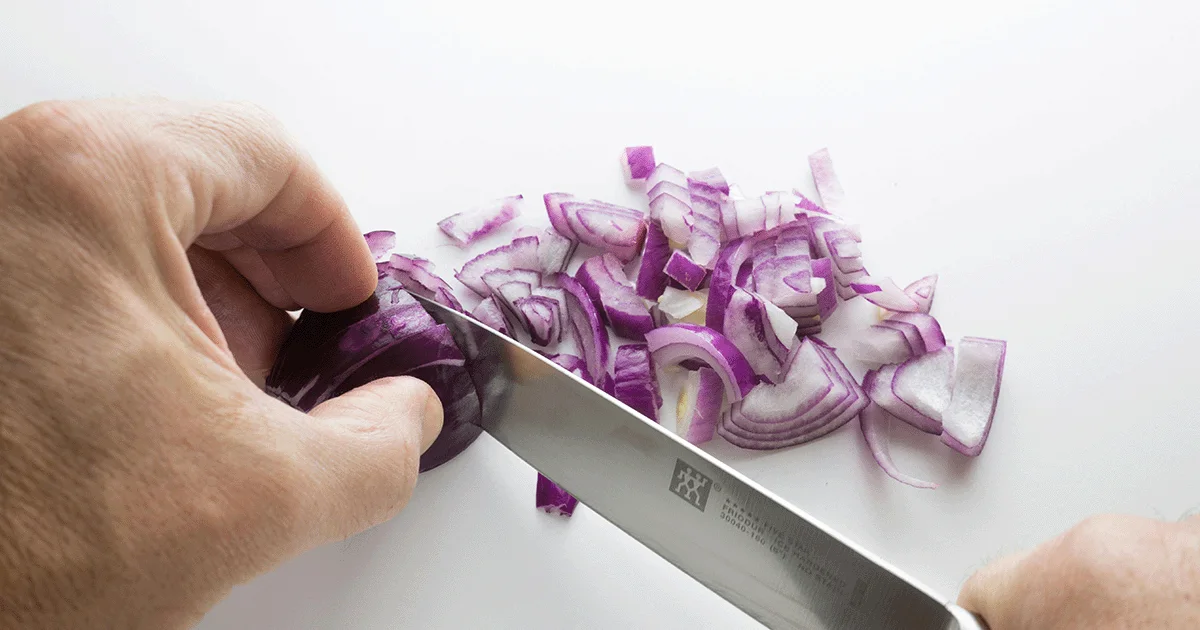Here's what we'll cover
Here's what we'll cover
You want to know how to shave your balls, but you’re not sure where to begin? You’ve got company.
Ball shaving is more popular than ever. A nationwide survey found that two-thirds (66%) of men aged 18-65 groom their body hair “down there.” That same survey also found that nearly one-quarter of those men sustained some type of injury while trimming the hair on or around the sensitive skin of their genitals (Truesdale, 2017).
These findings suggest that there’s a right way and a wrong way to go about shaving your nether regions. Here’s what you need to know about shaving your balls safely.
How to shave your balls
One of the challenges of shaving your pubes is that it can be awkward. Your testicles and penis are not as accessible as, say, your face. And trying to maneuver a razor or clippers down there while holding your skin taut can be tricky. So, what’s the best way to go about this type of hair removal? First, you’ll need the right tools for the task at hand.
Step 1: Choose the right tools
Clippers? Razors? Scissors? It’s an understandable and common question; so common, in fact, that researchers have put the hours in to come up with an answer.
One study looked at the incidence of skin trauma among men who had their pubic hair removed prior to surgery in the genital area. Believe it or not—even though the men were being shaved by experienced surgeons and medical residents, minor cuts, nicks, and abrasions still happened. But they were less frequent when doctors used two-blade safety razors instead of electronic clippers (aka, electric trimmers). The razors also produced a smoother, more-consistent shave than the clippers (Grober, 2012).
This same result also turned up in a study of grooming-related injuries. While the use of electronic clippers was a bit more common than the use of a razor, the proportion of men who had been injured was higher among “Team Clipper,” as opposed to a “Team Razor” (Truesdale, 2017). That study did not assess whether men were using clippers with or without a blade guard. It’s possible that using clippers equipped with a guard—in other words, going for a trimmed look, rather than a close shave—is the safest route of all.
There are also several “body grooming” shavers on the market that include guards and attachments that can help you get a more consistent result and avoid undesirable nicks and cuts in an extremely sensitive area.
It may be that a combination of tools is best, especially if you’re going from fully grown to cleanly shaven.
Step 2: Snip or trim first, then shave
The more hair you have down there, the more likely your razor is to become snagged or stuck. This can lead to cuts or scratches.
It’s helpful to start the job with scissors or trimmers. Once you’ve done some careful pruning—getting those pubic hairs down to a more-manageable length—you can switch to a razor to finish the job. However, you may find that you prefer the low-and-tight look to going completely bare.
Doing this step while your pubic hair is dry may make the job easier. Wet pubes can be difficult to trim with clippers or scissors.
Step 3: Use some kind of sensitive-skin shaving cream
Shaving creams or oils are designed to soften and raise your hairs, making them easier to remove with a razor. These products also hydrate your skin and can help prevent razor burn, knicks, or scratches.
You use them on your face, and there’s no reason not to use them on your pubes. Shopping for a product made for sensitive skin may lower your risk of any irritation down there.
Step 4: Go with the grain
Shaving against the grain—whether on your face or on your balls—can give you an extra close shave, but it can also cause snags or ingrown hairs.
Holding your skin taut and using short strokes, shave with the grain to safely remove the hair from your scrotum, shaft, and anywhere else you see fit.
If you’re prone to ingrown hairs, there’s not much good research on managing these in your pubic region. But dermatologists have found that gentle exfoliation—for example, cleaning the area with an exfoliating scrub, or even a washcloth—can help reduce ingrown hair follicles on your face. The same techniques may work in your groin region (Rudd, 2021).
Finally, if you’re wondering whether hydrating lotions, aloe, or warm water (as opposed to cold water) make a difference, the jury’s still out. There is no solid evidence looking at these techniques for pubic hair grooming.
Where do men tend to manscape?
It’s a question you probably don’t want to ask your buddies. Fortunately, you don’t have to. Research surveys have found that the vast majority of men (91%) who groom themselves trim back the pubic hair above their penis. One “side effect” many men probably don’t mind: trimming your pubic hair above and around your penis can make your penis look bigger. Especially cutting your pubes a bit closer to the base of the penis can make it appear to have more length.
Fewer groomers (roughly 60-70%, depending on age group) trim or shave the hair on their scrotum. Between 50-60% shave the hair on the shaft of their penis, while fewer than half trim the hair of their inner thighs. Also, less than half shave the hair between their balls and anus (Gaither, 2017).
What sorts of injuries or problems are typical?
Lacerations (cuts or scratches) are the most common grooming-related injuries. Razor burns or rashes can follow those.
In terms of injury sites, the scrotum (ball sack) is easily the most typical. Roughly two-thirds of injuries happen there. The penis shaft comes in second, while injuries to other places were less common (Truesdale, 2017).
More research has found that ingrown hairs are also somewhat common (Butler, 2015).
Does shaving my balls increase my risk for an STD?
You may have heard this rumor about manscaping and sexually transmitted diseases. And like a lot of rumors, it seems to have some common sense behind it. Cuts and scrapes, even very minor ones, can allow infection-causing pathogens to enter your body and make you sick (Bednarz, 2020).
However, research doesn’t support this rumor about manscaping. One recent study found no evidence that men who had recently shaved their genitals were at increased risk for an STD (also known as a sexually transmitted infection, or STI) (Gaither, 2020).
Why do men shave their balls?
There are multiple reasons for grooming around the family jewels, but most men put sex at the top of the list. Preparing for sexual intercourse is the most common reason men give for shaving their pubic hair, which is more common among younger men than older men (Gaither, 2017).
Other common justifications include (Gaither, 2017):
For hygienic reasons, such as reducing odor
To make oral sex easier
Because their partner likes it
To make their penis look larger
Preparing for a trip to the doctor’s office
For comfort
For religious reasons
No matter your reason, you can get into some trouble shaving your balls. But with the right skincare tools and a careful technique—especially when shaving around your scrotum—you can lower your risk for an injury.
DISCLAIMER
If you have any medical questions or concerns, please talk to your healthcare provider. The articles on Health Guide are underpinned by peer-reviewed research and information drawn from medical societies and governmental agencies. However, they are not a substitute for professional medical advice, diagnosis, or treatment.
Bednarz, B., Thakkar, M., & Wright, T. (2020). Skin Adhesives: A Solution to Minor Cuts and Abrasions on the Surgeon's Hands. Surgical Infections , 21 (5), 472. doi: 10.1089/sur.2019.347. Retrieved from https://www.liebertpub.com/doi/full/10.1089/sur.2019.347
Butler, S. M., Smith, N. K., Collazo, E., Caltabiano, L., & Herbenick, D. (2015). Pubic hair preferences, reasons for removal, and associated genital symptoms: comparisons between men and women. The Journal of Sexual Medicine , 12 (1), 48–58. doi: 10.1111/jsm.12763. Retrieved from https://www.sciencedirect.com/science/article/abs/pii/S1743609515309036
Gaither, T. W., Awad, M. A., Osterberg, E. C., Rowen, T. S., Shindel, A. W., & Breyer, B. N. (2017). Prevalence and Motivation: Pubic Hair Grooming Among Men in the United States. American Journal of Men's Health , 11 (3), 620–640. doi: 10.1177/1557988316661315. Retrieved from https://journals.sagepub.com/doi/pdf/10.1177/1557988316661315
Gaither, T. W., Fergus, K., Sutcliffe, S., Cedars, B., Enriquez, A., Lee, A., et al. (2020). Pubic Hair Grooming and Sexually Transmitted Infections: A Clinic-Based Cross-Sectional Survey. Sexually Transmitted Diseases , 47 (6), 419–425. doi: 10.1097/OLQ.0000000000001176. Retrieved from https://journals.lww.com/stdjournal/Fulltext/2020/06000/Pubic_Hair_Grooming_and_Sexually_Transmitted.12.aspx?context=LatestArticles
Grober, E. D., Domes, T., Fanipour, M., & Copp, J. E. (2013). Preoperative hair removal on the male genitalia: clippers vs. razors. The Journal of Sexual Medicine , 10 (2), 589–594. doi: 10.1111/j.1743-6109.2012.02904.x. Retrieved from https://pubmed.ncbi.nlm.nih.gov/22908852/
Rudd, E. & Walsh, S. (2021). Mask related acne ("maskne") and other facial dermatoses. BMJ (Clinical Research ed.) , 373 , n1304. doi: 10.1136/bmj.n1304. Retrieved from https://www.bmj.com/content/373/bmj.n1304.full
Truesdale, M. D., Osterberg, E. C., Gaither, T. W., Awad, M. A., Elmer-DeWitt, M. A., Sutcliffe, S., et al. (2017). Prevalence of Pubic Hair Grooming-Related Injuries and Identification of High-Risk Individuals in the United States. JAMA Dermatology , 153 (11), 1114–1121. doi: 10.1001/jamadermatol.2017.2815. Retrieved from https://www.ncbi.nlm.nih.gov/pmc/articles/PMC5










